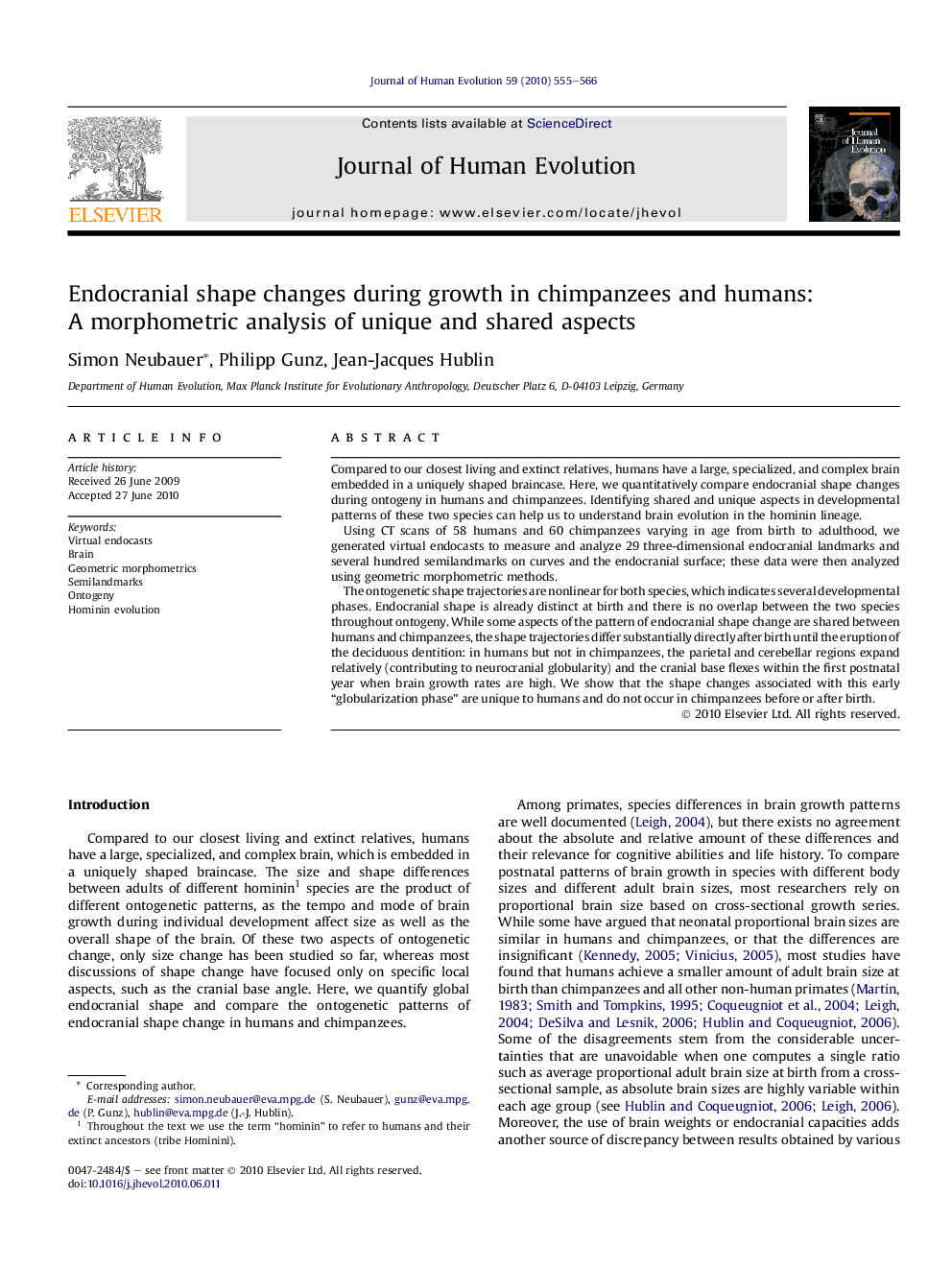| Article ID | Journal | Published Year | Pages | File Type |
|---|---|---|---|---|
| 6389284 | Journal of Human Evolution | 2010 | 12 Pages |
Compared to our closest living and extinct relatives, humans have a large, specialized, and complex brain embedded in a uniquely shaped braincase. Here, we quantitatively compare endocranial shape changes during ontogeny in humans and chimpanzees. Identifying shared and unique aspects in developmental patterns of these two species can help us to understand brain evolution in the hominin lineage.Using CT scans of 58 humans and 60 chimpanzees varying in age from birth to adulthood, we generated virtual endocasts to measure and analyze 29 three-dimensional endocranial landmarks and several hundred semilandmarks on curves and the endocranial surface; these data were then analyzed using geometric morphometric methods.The ontogenetic shape trajectories are nonlinear for both species, which indicates several developmental phases. Endocranial shape is already distinct at birth and there is no overlap between the two species throughout ontogeny. While some aspects of the pattern of endocranial shape change are shared between humans and chimpanzees, the shape trajectories differ substantially directly after birth until the eruption of the deciduous dentition: in humans but not in chimpanzees, the parietal and cerebellar regions expand relatively (contributing to neurocranial globularity) and the cranial base flexes within the first postnatal year when brain growth rates are high. We show that the shape changes associated with this early “globularization phase” are unique to humans and do not occur in chimpanzees before or after birth.
